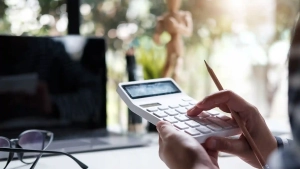How to Use Public Transport in Berlin Like A Local: The Ultimate Guide for Newcomers, and Visitors
- How to Use Public Transport in Berlin Like A Local: The Ultimate Guide for Newcomers, and Visitors
- Berlin Ticket Prices in 2025: Overview
- Berlin Public Transport System Explained: Who Operates What?
- Understanding Berlin Transport Zones: AB, BC, and ABC
- Berlin Public Transport Ticket Prices and Which Ticket to Buy
- How to Use the U Bahn in Berlin (Underground Metro)
- How to Use the S Bahn in Berlin (City and Suburban Trains)
- How to Use Buses in Berlin Like a Local
- How to Use Trams in Berlin
- Using the BVG App and Route Planners
- Travel at Night in Berlin Using Public Transport
- How to Get from Berlin Airport to City by Train or Bus
- Accessibility in Berlin Public Transport: Elevators, Ramps, and More
- Public Transport Rules in Berlin
- Tips for Expats, Students, and Long-Term Residents
- How to Read the Berlin S-Bahn and U-Bahn Map
- Step 1: Understand the Difference Between S-Bahn and U-Bahn
- Step 2: Learn the Color-Coding and Line Numbering
- Step 3: Identify Transfer Stations
- Step 4: Use the Ringbahn to Navigate Around the City
- Step 5: Read Real-Time Service Information
- Step 6: Plan Routes with Key Landmarks in Mind
- Step 7: Use Apps for Routing and Live Maps
- Mastering Berlin’s Transport System
To use public transport in Berlin, start by purchasing a valid AB or ABC zone ticket—either from a machine, kiosk, or via the BVG app. One ticket covers U-Bahn, S-Bahn, trams, and buses. Validate paper tickets before boarding. With digital tickets, validation is automatic.
How to Use Public Transport in Berlin depends on the vehicle you take, but all systems are connected. The U-Bahn is the underground metro—enter the platform, validate your ticket, and board the train. Trains run every few minutes and stop at every station.
To use the S-Bahn (above-ground trains), check the green “S” signs, validate your ticket on the platform, and board. These trains are best for longer trips across the city or to suburbs. S-Bahn runs frequently and shares the same ticket as U-Bahn.
For trams, board through any door, validate your paper ticket using the onboard machine, or show your digital ticket when asked. Trams are ideal for neighborhood travel, especially in East Berlin, and stop frequently along main roads.
To use Berlin’s buses, board at the front and show your ticket to the driver if it’s paper. For trams and buses, you must press the stop button to signal you want to exit. Night buses operate after midnight on weekdays.
The BVG app helps plan routes, buy tickets, and check delays in real time. You can transfer freely between all modes as long as your ticket is valid for the zones and time period.
Berlin Ticket Prices in 2025: Overview
| Ticket Type | Standard Price | With BVG Subscription | Notes |
|---|---|---|---|
| Single Ticket (AB) | €3.50 | N/A | Valid 2 hrs, one direction only |
| 4-Trip Ticket (AB) | €10.00 | N/A | 4 single rides, cheaper per ride |
| Day Ticket (AB) | €9.90 | N/A | Unlimited travel until 3AM next day |
| 7-Day Ticket (AB) | €41.50 | N/A | Ideal for short stays |
| Monthly Pass (AB) | €86.00 | €63.00 (Subscription) | Subscription requires 12-month contract |
| Deutschlandticket | €58.00 | N/A | Covers all local transport across Germany |
Berlin Public Transport System Explained: Who Operates What?
Berlin’s public transport is operated mainly by BVG (Berliner Verkehrsbetriebe) and S-Bahn Berlin GmbH. These two providers handle all U-Bahn (subway), S-Bahn (commuter train), trams, buses, and even ferries across the city and some surrounding areas.
The best part? It’s fully integrated. One ticket works across all modes—whether you’re riding an U-Bahn, switching to a bus, or hopping on a tram. That makes traveling seamless and efficient.
Understanding Berlin Transport Zones: AB, BC, and ABC
Berlin’s fare system is based on three zones:
- Zone A: The city center (within the Ringbahn)
- Zone B: The rest of Berlin outside the Ringbahn
- Zone C: Surrounding areas like Potsdam, Oranienburg, and Berlin Brandenburg Airport (BER)
Which zone ticket do you need?
- AB: Most people living or traveling inside Berlin will only need AB.
- ABC: Needed for airport trips or day visits to Potsdam or the outskirts.
- BC: Rarely used unless you live outside central Berlin but avoid Zone A.
Berlin Public Transport Ticket Prices and Which Ticket to Buy
Tickets are time-based, not distance-based. That means you can switch between U-Bahn, S-Bahn, tram, and bus as long as your ticket is valid and covers the correct zones.
Most common ticket options
| Ticket Type | Validity | AB Price (approx.) |
|---|---|---|
| Single Ticket (Einzelfahrschein) | 2 hours, one direction | €3.50 |
| Short Trip (Kurzstrecke) | Up to 3 stops on U/S-Bahn or 6 on buses | €2.40 |
| Day Pass (Tageskarte) | Until 3 AM next day | €9.90 |
| 4-Trip Ticket | 4 single rides (cheaper per ride) | €10.00 |
| Weekly Ticket | 7 consecutive days | €41.50 |
| Monthly Ticket | 30 days from activation | €86.00 |
| Student Semester Ticket | 6 months (only for enrolled students) | Usually prepaid |
All prices depend on zones. ABC tickets cost more than AB.
Important: Paper tickets must be validated before boarding. Digital tickets from the BVG app are auto-validated.
How to Use the U Bahn in Berlin (Underground Metro)
The U-Bahn is Berlin’s metro system and consists of 10 lines covering most of the city. It’s mostly underground but surfaces in outer areas.
- Best for: Short and medium-distance city travel
- Frequency: Every 3–5 minutes during peak hours, every 10 at night
- Operating hours: 4 AM to 1 AM (weekdays), 24/7 on weekends
- Useful tip: Avoid lines like U8 or U7 late at night if traveling alone—they can be empty and poorly lit in some sections.
Stations are marked with a blue “U” symbol. Trains are clean, reliable, and the fastest way around central districts like Mitte, Kreuzberg, Neukölln, and Charlottenburg.
How to Use the S Bahn in Berlin (City and Suburban Trains)
The S-Bahn is a suburban commuter train system that complements the U-Bahn.
- Best for: Cross-city travel, airport transfers, and reaching suburbs
- Key lines:
- S9 – connects city to BER airport
- S3, S5, S7 – traverse from east to west
- S41/S42 – circular Ringbahn around the city
S-Bahn stations are marked with a green “S” sign. While U-Bahn is more central, the S-Bahn lets you explore Berlin’s outskirts or make fast long-haul trips across the city.
How to Use Buses in Berlin Like a Local
Buses cover areas that trains don’t reach—especially quieter neighborhoods, outer districts, and night hours.
- M-lines: Metro buses like M29 and M41 are high-frequency and run similar to trams.
- X-lines: Express buses like X10 skip many stops and serve long routes.
- Night buses: Marked with “N”, they operate after U-Bahn/S-Bahn closes during weekdays.
How to use the bus:
- Enter through the front door.
- Show your ticket to the driver (if paper).
- Push the stop button before your destination.
Digital displays and announcements show each stop. Don’t be shy to ask the driver if you’re unsure—they’re used to international riders.
How to Use Trams in Berlin
Trams are an iconic part of Berlin’s identity, particularly in the former East.
- Mainly operate in: Prenzlauer Berg, Friedrichshain, Lichtenberg, Pankow
- Smooth and frequent: M4, M10, and M13 are key tram lines
- Advantages: Street-level travel with better views than U-Bahn
You can board trams at any door. If you don’t have a mobile ticket, use the machine onboard (it only accepts coins or cards). Remember to validate paper tickets at the small red or yellow machines onboard.
Using the BVG App and Route Planners
The BVG Fahrinfo app is essential. It’s available in English and allows you to:
- Buy and validate tickets
- Get real-time train/bus/tram updates
- Plan routes using all transport types
- View delays, construction work, and elevator outages
Other useful apps include:
- Google Maps: Fully synced with Berlin public transport
- Citymapper: Great interface, perfect for tourists
- Jelbi: BVG’s own mobility app—includes e-scooters, bike-sharing, and car rentals
Travel at Night in Berlin Using Public Transport
Berlin has 24/7 transport, just not always the same mode.
Weekday Nights (Mon–Thurs)
- U-Bahn and S-Bahn stop at ~1 AM
- Night buses (N-lines) and night trams (e.g., M4) run instead
Weekends (Fri–Sun)
- U-Bahn and S-Bahn run all night, every 10–15 minutes
- Ideal for going out, clubbing, or airport departures
Night maps are different. You’ll find them posted at major stations, or just plan ahead using the app.
How to Get from Berlin Airport to City by Train or Bus
Berlin Brandenburg Airport (BER) lies in Zone C. You need an ABC ticket to get there.
Options:
- S-Bahn S9 or S45 – direct to city center
- Regional trains (RE7, RB14) – faster, fewer stops
- Buses (X7, BER1) – connect airport to U-Bahn
Travel time: 30–45 minutes to Alexanderplatz or Hauptbahnhof.
Be sure to buy your ticket before boarding at the airport’s train station. Inspectors are active on airport routes.
Accessibility in Berlin Public Transport: Elevators, Ramps, and More
Berlin continues to invest in accessible infrastructure, though not all stations are 100% barrier-free yet.
- Elevators: Installed in most central U-Bahn/S-Bahn stations
- Low-floor trams and buses: Ramps for strollers and wheelchairs
- Priority seating: Clearly marked and often enforced
- Announcements: Visual and audio displays help with navigation
Use the BVG app filter for “accessible routes only” to avoid stairs or closed elevators.
Public Transport Rules in Berlin
Berliners are serious about transport etiquette—even if it’s not always visible.
Unspoken rules:
- Stand right, walk left on escalators
- Don’t block doors
- Don’t eat smelly food on board
- Headphones are mandatory if playing music
Common fines:
- No ticket or unvalidated ticket: €60
- Bike without a bike ticket: €2.10 fine (if noticed)
- Smoking or drinking on trains: €100+
Inspectors don’t wear uniforms and can appear at any time. Always carry valid ID if using a discounted ticket.
Tips for Expats, Students, and Long-Term Residents
If you’re staying in Berlin for more than a month, consider:
- Monthly AB ticket if your job/school is central
- BVG subscription (ABO) for lower monthly cost
- Student semester ticket if you’re enrolled at a university
- Jelbi for the last mile: E-scooters, bikes, or car-sharing for areas far from stations
Living near an U-Bahn or Ringbahn station increases your quality of life significantly. It’s worth choosing accommodation accordingly.
KUMMUNI offers furnished rooms and apartments located near Berlin’s key U-Bahn and S-Bahn lines. With prices starting from €639 for students, and a zero-discrimination policy, KUMMUNI makes it easier for newcomers to settle into the city and access everything Berlin offers.
How to Read the Berlin S-Bahn and U-Bahn Map
Berlin’s public transport map may look overwhelming at first glance, but once you understand how it works, it becomes easy to navigate the entire city. The map combines both the S-Bahn and U-Bahn networks, each with distinct characteristics, routes, and color codes.
Here’s a step-by-step guide to understanding and using it effectively.
Step 1: Understand the Difference Between S-Bahn and U-Bahn
The Berlin transit system includes two major rail networks:
- S-Bahn (Stadtschnellbahn): Suburban rail network operated by Deutsche Bahn. These lines cover long distances, mostly above ground, and are marked with an “S” inside a green circle.
- U-Bahn (Untergrundbahn): Berlin’s underground metro operated by BVG. These trains mostly run within the city limits and are marked with a “U” inside a blue square.
Both systems use the same ticketing structure and are integrated across fare zones.
Step 2: Learn the Color-Coding and Line Numbering
Each line on the map is color-coded to help users quickly identify the route:
- U-Bahn: U1 (green), U2 (red), U3 (turquoise), U5 (brown), U7 (dark blue), and so on.
- S-Bahn: S3 (light blue), S5 (red), S7 (purple), S9 (orange), etc.
Line numbers help determine the route, while the colors assist with quick visual recognition, especially at complex stations with multiple lines.
Step 3: Identify Transfer Stations
Where multiple lines intersect, you’ll find transfer stations. These are often marked with larger circles or bolder station names. Some of the most important transfer hubs include:
- Alexanderplatz: U2, U5, U8, and multiple S-Bahn lines
- Hauptbahnhof: Major interchange with regional and long-distance trains
- Ostkreuz: A key S-Bahn hub with several line connections
- Zoologischer Garten: A central connection point in western Berlin
- Gesundbrunnen: Access to regional trains and Ringbahn lines
These are useful for planning efficient route changes.
Step 4: Use the Ringbahn to Navigate Around the City
One of the unique features of Berlin’s S-Bahn is the Ringbahn—formed by lines S41 (clockwise) and S42(counterclockwise). This circular route connects many major districts and acts like a bypass for reaching outer neighborhoods without cutting through the city center.
If you’re commuting between boroughs or avoiding central congestion, the Ringbahn is one of the most time-efficient options.
Step 5: Read Real-Time Service Information
In official apps like BVG Fahrinfo or Deutsche Bahn Navigator, and at larger stations, you’ll often see a panel similar to the one shown in the left of the transit map image. This area shows live service updates.
- Lines listed without icons are running normally.
- A yellow triangle icon signals delays or route changes.
- For example:
- S46: “Zugverkehr verändert” means train service is altered.
- S42: “Verspätungen” indicates delays or partial cancellations.
Always check this section before you travel, especially during strikes, maintenance work, or weather disruptions.
Step 6: Plan Routes with Key Landmarks in Mind
To make your commute or visit easier, get familiar with stations that provide access to key neighborhoods:
| Station | Area or Landmark |
|---|---|
| Alexanderplatz | TV Tower, Museum Island, Central Mitte |
| Warschauer Straße | East Side Gallery, nightlife in Friedrichshain |
| Zoologischer Garten | Ku’damm shopping district |
| Hermannstraße | Multicultural Neukölln, transfer to U8 |
| Hauptbahnhof | Central train station for regional and ICE |
Using these known reference points can simplify route decisions and help you orient yourself faster.
Step 7: Use Apps for Routing and Live Maps
While the printed and PDF versions of the map are useful, digital apps make navigation even easier. Recommended tools include:
- BVG Fahrinfo Berlin
- DB Navigator
- Google Maps with transit mode
These apps show exact train departure times, live disruptions, platform numbers, and walking distances between transfer stations.
Mastering Berlin’s Transport System
Public transport in Berlin is not just a way to get around—it’s part of the city’s rhythm. From sleek yellow U-Bahn trains to slow, scenic trams rolling through the old East, every ride tells a story. Whether you’re on a daily commute or discovering Berlin for the first time, knowing how to use the system turns chaos into comfort.
With the right ticket, the right app, and a little local etiquette, Berlin’s vast transport web becomes a playground rather than a maze.
How informative was this article?
Click on a star to rate it!
We are sorry that this post was not useful for you!
Let us improve this post!
What is missing in the article?















